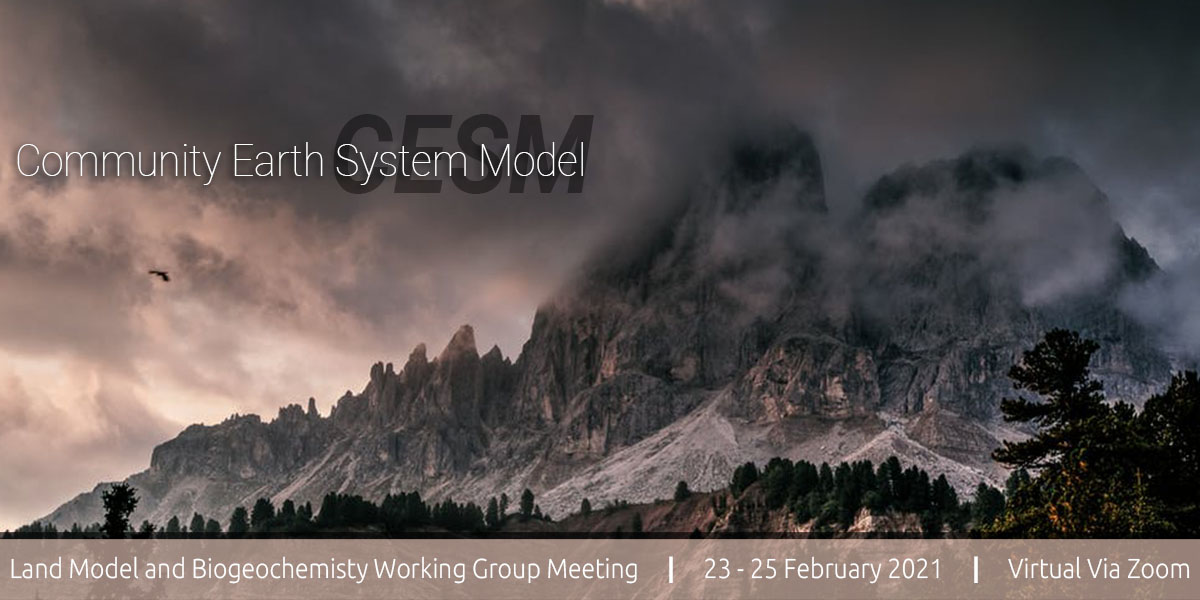2021 CESM Land Model & Biogeochemistry Working Group Meeting

The Community Land Model is the land model for the Community Earth System Model. It is a collaborative project between scientists in the Terrestrial Sciences Section and the CESM Land Model and Biogeochemistry Working Groups. Other principal working groups that contribute to the CLM are the Chemistry-Climate, Paleoclimate, Climate Change, and Land Ice Working Groups
* Meeting agenda, participant list, and presentations will be posted here at a later date.
Meeting Agenda
View the agenda in PDF format here
Meeting Contact
For questions about the meeting, contact Elizabeth Faircloth [ fair@ucar.edu ]
Meeting Presentations
Tuesday 23 February 2021 - Land Model and Biogeochemistry Working Group
| Presentation Title | Presenter |
|---|---|
| State of CTSM and LMWG activities | Will Wieder |
| Updates on CTSM and CTSM5.1(CLMBGC) PPE | Dave Lawrence |
| Land-atmosphere interactions across model versions of CESM | Meg Fowler |
| Latent cooling vs. the water-vapor greenhouse: competing temperature responses to terrestrial evaporation | Marysa Lague |
| Differences in surface temperature variability between CESM1 and CESM2 | Isla Simpson |
| Warmer and more volatile: explaining increased summertime temperature variance driven by climate change | Gunter Leguy |
| CESM2 extensions to 2300 | Charlie Koven |
| Theoretical foundations for uncertainty analysis in land carbon prediction | Yiqi Luo |